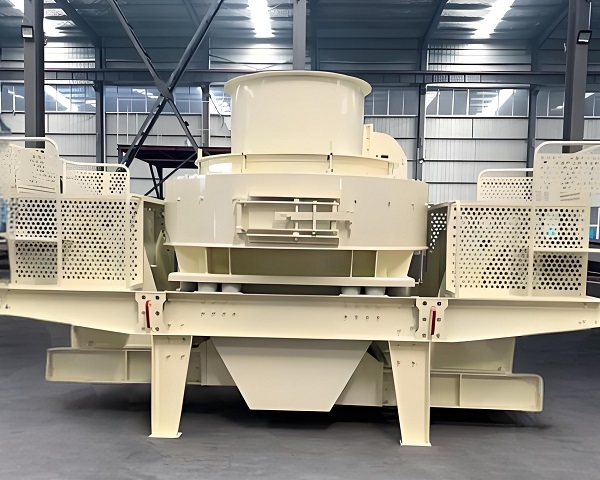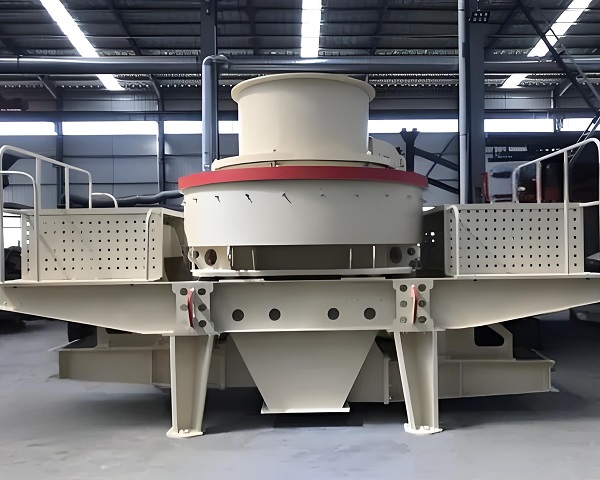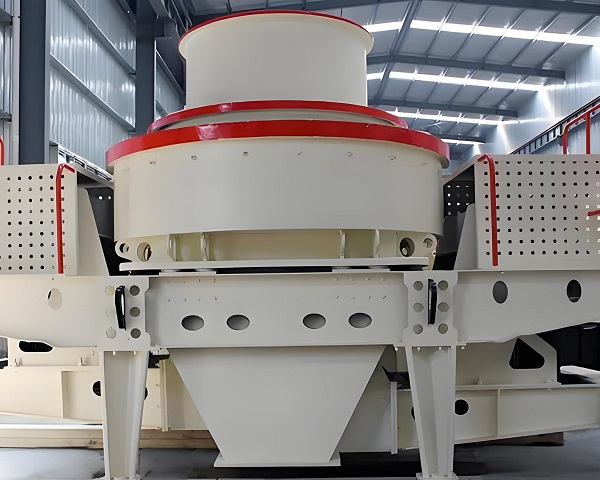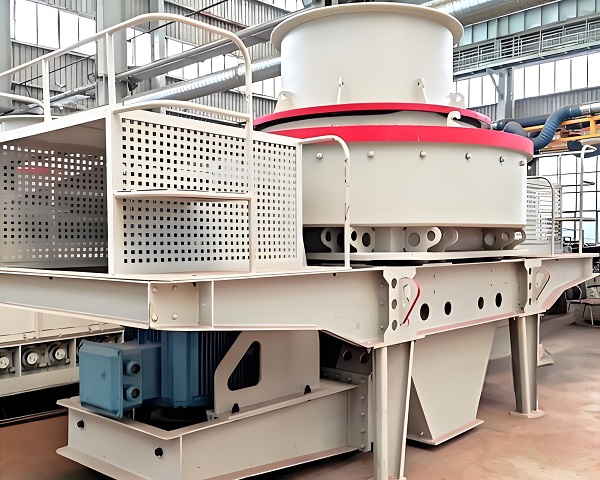A Trommel Screen is a rotary drum screening machine widely used in waste processing, mining, and construction industries. It efficiently separates materials by ......
What is the Sand Maker
Sand Maker (Sand making machine) is a special equipment that crushes various ores, rocks and other materials into machine-made sand that meets the particle size requirements. It plays an indispensable role in modern engineering construction and resource development.
In terms of working principle, sand making machine mainly crushes materials by impact, extrusion, grinding and other methods. Different types of sand making machines use different principles. For example, impact sand making machine uses high-speed rotating impeller to throw materials out and collide with the impact plate to crush them; hammer sand making machine uses high-speed rotating hammer to hit and crush materials. These diverse working methods ensure that it can adapt to the processing needs of materials of different hardness and particle size.
Sand making machine has significant performance advantages. First, it is highly efficient and energy-saving. Compared with traditional crushing equipment, it can achieve higher output at the same energy consumption; second, the finished product has excellent particle shape. The processed machine-made sand particles have regular shape and reasonable gradation, which can effectively meet the high-standard requirements for construction sand; third, it has a high degree of intelligence. Some sand making machines are equipped with intelligent control systems, which can monitor the operating status of the equipment in real time, adjust parameters, reduce the risk of failure, and improve production efficiency; fourth, it has good environmental performance. By configuring dust removal equipment and noise reduction devices, it can reduce dust and noise pollution in the production process, which meets the requirements of green production.
In terms of application range, sand making machines are extremely widely used. In the construction field, it is used to produce aggregates required for concrete and mortar; in road and bridge projects, it provides base crushed stone and asphalt concrete aggregates; in water conservancy and hydropower projects, it supplies high-quality sand and gravel for dam construction; in the mining and mineral processing industry, it completes the fine crushing of ore; in addition, it is also used in the building materials and chemical industries to process glass raw materials, refractory materials, etc.
With the development of the industry, sand making machines are also constantly iterating and upgrading. On the one hand, it develops in the direction of large-scale and high-yield production to meet the demand for sand and gravel in large-scale engineering construction; on the other hand, it focuses on the application of energy-saving and environmental protection technologies, develops new energy-saving materials and high-efficiency dust removal systems, and reduces energy consumption and pollutant emissions; at the same time, the level of intelligence and automation continues to improve, and with the help of technologies such as the Internet of Things and big data, remote monitoring and fault warning are realized, promoting sand making machines to move towards intelligent production.
Operating principle of Sand Maker
Sand Maker (Sand making machine) use mechanical force to crush various types of ores and rocks into machine-made sand. Depending on the type of equipment, its working principle has different emphases. It can be mainly divided into impact type, hammer type, roller type and other types.
Impact sand making machine is one of the most widely used types at present. Its core principle is based on high-speed impact and collision. When the equipment is running, the motor drives the impeller to rotate at high speed. After the material enters the impeller through the feed hopper, it is thrown out from the impeller outlet at a speed of 70-100m/s under the action of centrifugal force, and collides with the impact plate, liner or subsequent material in the crushing chamber at high speed. The huge impact force in an instant crushes the material. After that, the crushed material falls to the lower part under the action of gravity, and is screened by the screening system. The material that does not meet the particle size requirements returns to the impeller for crushing again until it reaches the required particle size. This "stone hitting stone" and "stone hitting iron" method can not only effectively crush the material, but also improve the particle shape of the finished sand.
Hammer sand making machine adopts the principle of impact crushing. There are multiple hammers installed on the high-speed rotating main shaft. After the material enters the crushing chamber, it is first impacted by the high-speed rotating hammer and crushed. The crushed material flies to the impact plate and grate inside the crushing chamber at high speed, collides and squeezes with them again, and is further crushed. The material smaller than the gap of the grate is discharged through the grate and becomes finished sand; the material larger than the gap continues to be hit by the hammer in the crushing chamber and is repeatedly crushed until it meets the particle size requirements. The hammer sand making machine has a simple structure and a large crushing ratio, which is suitable for the processing of brittle materials.
The roller sand making machine uses the principle of extrusion crushing. Two rollers rotate relative to each other, one is a fixed roller and the other is a movable roller. After the material enters the crushing chamber between the two rollers, it is crushed by the extrusion of the rollers. As the rollers rotate, the material is gradually brought into the smallest gap between the two rollers. During this process, the extrusion force on the material gradually increases until it is broken. The finished sand is discharged from the bottom, and the material that does not reach the particle size will continue to be extruded and crushed in the crushing chamber under the action of gravity and the rotation of the rollers. This method is suitable for medium and low hardness materials, and the finished product has uniform particle size and less over-crushing.
Although different types of sand making machines have different principles, they all convert mechanical energy into crushing force through scientifically designed mechanical movements, achieving efficient transformation of materials from large particle size to machine-made sand, meeting the diverse needs of construction, road and other industries for sand and gravel aggregates.
Advantages and features of Sand Maker
As the core equipment of modern sand and gravel production, sand making machine plays an important role in the construction, road, water conservancy and other industries with its unique performance characteristics and significant advantages, and has become a key force in promoting the development of the sand and gravel industry.
High efficiency and high yield are the significant advantages of sand making machine. By optimizing the structural design and power system, the sand making machine can achieve a higher material processing volume per unit time. Some large sand making machines can produce hundreds of tons per hour, which can quickly meet the demand for sand and gravel aggregates in large-scale engineering construction. Taking the impact sand making machine as an example, its high-speed rotating impeller and reasonable crushing chamber design allow the material to be impacted and crushed multiple times in a short period of time, greatly improving production efficiency.
The excellent quality of the finished product is the outstanding feature of the sand making machine. The machine-made sand produced by the sand making machine has regular particle shape, reasonable grading, low needle-like content, and controllable stone powder content, which can effectively meet the high-standard construction sand requirements. Compared with natural sand, machine-made sand is easier to adjust in terms of fineness modulus, particle shape, etc., and can be customized according to engineering needs to ensure the strength and durability of building materials such as concrete and mortar.
Energy saving and good environmental performance are important advantages of sand making machines. Modern sand making machines use new wear-resistant materials and optimized transmission systems to reduce energy consumption during equipment operation. At the same time, by configuring high-efficiency dust removal equipment and noise reduction devices, dust and noise pollution in the production process can be effectively reduced. For example, some sand making machines are equipped with pulse bag dust collectors, and the dust removal efficiency can reach more than 99%, which meets national environmental protection standards and helps enterprises achieve green production.
High intelligence and automation give sand making machines unique competitiveness. Advanced sand making machines are equipped with intelligent control systems, which can monitor the operating status of the equipment in real time, dynamically analyze parameters such as current, temperature, and vibration, and promptly warn of potential faults to avoid downtime losses. Operators can also adjust equipment parameters through the remote control platform to achieve precise control of the production process, reduce labor costs, and improve management efficiency.
Sand making machines also have strong material adaptability and a wide range of applications. Whether it is granite, limestone and other high-hardness ores, or river pebbles, construction waste and other materials, the sand making machine can process them into machine-made sand that meets the requirements by adjusting the crushing method and parameters, effectively expanding the source of sand and gravel resources and promoting resource recycling.
Technical Parameter Table of Sand Maker
| Item | Unit | VSI-7611 | VSI-8518 | VSI-9526 | VSI-1140 |
|---|---|---|---|---|---|
| Max Feeding Size | mm | 35 | 40 | 45 | 50 |
| Capacity | t/h | 60–90 | 100–130 | 150–220 | 200–380 |
| Rotation Speed | r/min | 1700–1890 | 1520–1690 | 1360–1510 | 1180–1310 |
| Motor Power | kW | 110×2 | 132×2 | 180×2 | 220×2 |
| Overall Dimensions (L×W×H) | mm | 4100×2250×2600 | 4140×2280×2630 | 4560×2447×2778 | 5100×2790×3320 |
| Weight | t | 12.1 | 14.8 | 16.5 | 25.6 |
| Lubrication Method | - | Thin Oil Station | Thin Oil Station | Thin Oil Station | Thin Oil Station |
| Discharge Opening Adjustment Range | mm | 0–5 | 0–5 | 0–5 | 0–5 |
| Working Mode | - | Vortex Crushing Cavity | Vortex Crushing Cavity | Vortex Crushing Cavity | Vortex Crushing Cavity |
If you have any special requirements, we will customize according to your special needs.
Product Picture Display of Sand Maker
FAQ about Sand Maker
>What is a sand making machine?
Sand making machine is a special equipment that crushes ore, rock and other materials into machine-made sand. Through the principles of impact, extrusion, grinding, etc., it converts large pieces of material into sand and gravel aggregates with the required particle size. It is widely used in construction, roads, water conservancy and other engineering fields.
>What types of sand making machines are there?
Common types include impact sand making machine, hammer sand making machine, roller sand making machine, cone sand making machine, etc. Impact sand making machine uses high-speed impact to crush materials; hammer sand making machine achieves crushing through hammer hitting; roller sand making machine relies on extrusion crushing; cone sand making machine is suitable for medium and fine crushing of medium-hard materials.
>What is the working principle of sand making machine?
Sand making machine processes materials by converting mechanical energy into crushing force. For example, the impact sand making machine allows the material to obtain kinetic energy in the high-speed rotating impeller, and then collides with the impact plate to crush; the hammer sand making machine uses a high-speed rotating hammer to hit the material, so that it hits the inner wall of the crushing chamber to further break until it reaches the required particle size.
>What is the quality of the machine-made sand produced by the sand making machine?
The machine-made sand produced by the sand making machine has regular particle shape, low needle-like content, controllable stone powder content, and grading that is more in line with the construction sand standard. By adjusting the equipment parameters, the fineness modulus of the finished sand can be accurately controlled to meet the quality requirements of sand and gravel aggregates for different projects such as concrete and mortar.
>Is the production efficiency of the sand making machine high?
The production efficiency of the sand making machine is relatively high, and the output of large equipment can reach hundreds of tons per hour. Its optimized structural design and power system, combined with the efficient crushing principle, can achieve rapid material processing. Some models are also equipped with an intelligent control system that can adjust parameters in real time to further increase production capacity.
>Does the sand making machine consume a lot of energy?
Modern sand making machines focus on energy-saving design, using new wear-resistant materials and optimizing transmission systems to reduce energy consumption. By reasonably configuring the motor power and improving the crushing chamber structure to reduce useless work loss, compared with traditional equipment, the energy consumption is significantly reduced at the same output, which is in line with the concept of green production.
>Is the sand making machine environmentally friendly?
Sand making machines have good environmental performance. Most equipment is equipped with high-efficiency dust removal systems, such as pulse bag dust collectors, which can effectively collect dust generated during the production process, with a dust removal efficiency of more than 99%; at the same time, noise reduction devices are configured to reduce equipment operation noise and reduce environmental pollution.
>What materials are sand making machines suitable for?
Sand making machines are suitable for a wide range of materials. They can process natural minerals such as granite, limestone, pebbles, and basalt, and can also process renewable resources such as construction waste and industrial waste slag. Different types of sand making machines are designed according to material characteristics to ensure good crushing effects on all kinds of soft and hard materials.
>Is the maintenance cost of sand making machines high?
The maintenance cost of sand making machines is relatively controllable. The key components of the equipment are made of wear-resistant materials to extend their service life; the modular design facilitates the replacement of wearing parts; the intelligent monitoring system can warn of faults in advance and reduce sudden damage. Regular and standardized maintenance can effectively reduce long-term maintenance costs.
>What is the future development trend of sand making machines?
Sand making machines will develop in the direction of large-scale, intelligent and green in the future. The scale of equipment will be increased to meet the needs of large-scale production; the Internet of Things and big data technologies will be integrated to achieve remote monitoring and intelligent control; energy-saving technologies will be further optimized to reduce energy consumption and pollutant emissions, and promote the sustainable development of the sand and gravel industry.


































